Water B-LEC: Light Energy Card
The “Water B-LEC” card is used positioned on the bottom of a transparent glass cylindrical bottle into which common drinking water (WF) is poured. The IR Fluorescence that is emitted, generated thanks to an illumination with an intensity higher than 600 Lux (even in the presence of clouds), allows to obtain Activated Water called LAW (Light Activated Water), which has a different physical structure and taste from that of WF, in line with what the scientific community defines as “Structured Water” or “Activated Water”. <- Read More ->
Many researchers discovered that the polar arrangement of the water molecule allows the bonds between molecules to form dimers, trimers, and even larger clusters. Researchers Scott Pegau, Gray and Zaneveld from Oregon State University (USA), demonstrated that when light of wavelengths longer than 450 nm (blue) is absorbed, energy is transferred to one or more of the modes vibrational of the O–H bonds. As the water molecules form hydrogen bonds with each other the O–H vibrational frequencies are shifted to longer wavelengths.
In nature, the energy for changing the structure of water comes mainly from the sun. The research team of prof. Gerald H. Pollack of the University of Washington (USA), demonstrated that water absorbs infrared (IR) energy freely from the environment and uses that energy to convert amorphous water into liquid crystalline water (“ Fourth Phase Water” or “E.Z. Water”). Furthermore, from several tests that we carried out since 2016, the water treated with visible light (VIS) also modifies some physical properties such as Absorbance and the State Transition Time. Therefore changes in some physical properties of water occur naturally and spontaneously thanks to the ambient visible radiation and the resulting IR fluorescence.
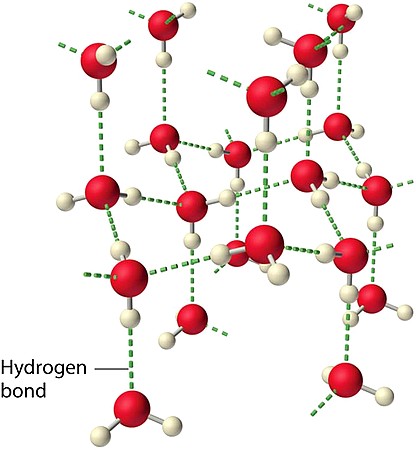
Sunlight spectrum
Thanks to the filtering effect of the atmosphere, from the total solar radiation, UV rays arriving at sea level represent 5%, visible light (VIS) represents 43%, while frequencies in the Near Infrared (NIR ) stand at 52%. The graph also shows that the NIR frequencies between 700 and 2500 nm are largely absorbed by the Water vapor of the clouds, and by gases such as Carbon Dioxide and Ozone.
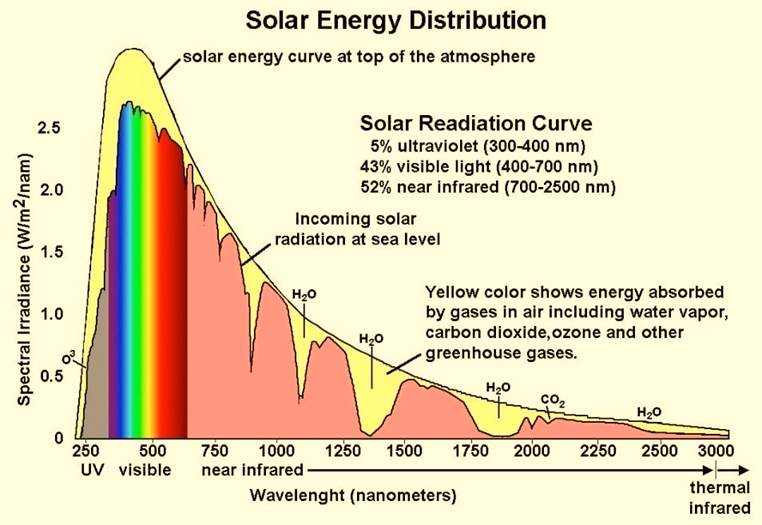
IR Fluorescence
Now let’s see what can provide additional photon energy to promote the production of Light Activated Water (LAW). Near-infrared radiation (NIR) is observed to be more effective for activating water, so RaphaEl technology relies in part on solar energy shifting methods, or more generally visible light (VIS), towards these frequencies.
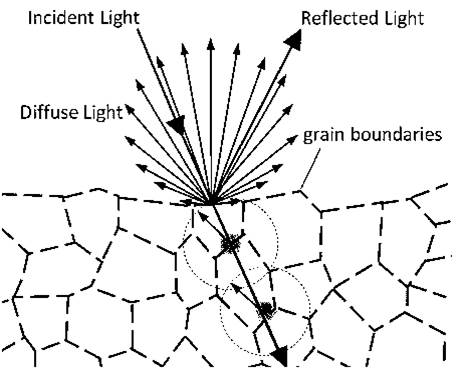
The absorption in the VIS region by a plastic polymer such as Polyethylene Terephthalate (PET) causes its molecules to vibrate and rotate due to the excitation of its molecular bonds. The oscillation created by this inelastic scattering phenomenon energizes the electrons of the polymer, and translates into a radiance at a wavelength (λ) higher than the incident one, as part of the energy of each photon of light is lost both by reflection and by different types of scattering (Rayleigh and Raman) which occur within the quasi-crystalline structure of the plastic polymer.
Since 2016 we observed that transparent PET multilayer-films with reduced thickness (< 0.500 mm), when exposed to photons of even indirect sunlight, absorb their energy and emit Fluorescence radiation in the IR spectrum.
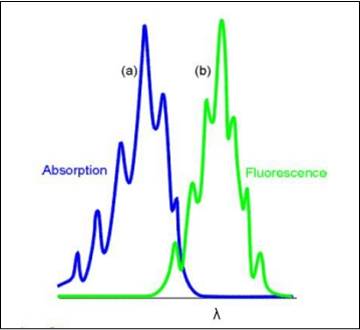
WaterB-LEC card
The card is made up of a multi-layered PET film in which a glossy photographic paper card is also integrated. When it is exposed to sunlight or a candle flame, the photons of light thanks to the quasi-crystalline structure of the plastic polymers, are reflected, absorbed and then diffused thanks to an IR Fluorescence process as explained before.
The WaterB-LEC card is used placed on the bottom of a cylindrical transparent glass bottle or carafe, contaninig common drinking water (WF). The radiation emitted by the PET of the card, generated thanks to sunlight with an intensity greater than 600 Lux (even in the presence of clouds); allows to obtain activated water called LAW (Light Activated Water), which has a different physical structure from that of WF, in line with what the scientific community defines as “Structured Water” or “Activated Water”.

Have been treated different drinking waters for at least 36 minutes since 2018: a general improvement of the organoleptic characteristics have been observed compared to the starting waters. The waters taste generally lighters, less metallics, and sweeters. These effects are more evidents if the water is placed in a glass carafe or a glass bottle instead of a plastic bottle (PET). Some volunteers report that drinking water treated with the WaterB LEC card every day has improved their digestion, also providing a diuretic effect.
How to use the card?
The card when not used must be kept in its gold aluminium foil pouche. Its correct use always involves placing the gold pouche below the card, and the container of water to be activated must be positioned above the card. Light Activation does not need to take place in direct sunlight, in fact indirect day lighting from a window is suitable to produce results.
1. Card Activation.
The card need to be activated exposing it directly to sunlight or a candle flame for 1-2 hours every week. In the picture the WaterB LEC card is shown exposed to direct sunlight, above a gold aluminium foil pouche that come in bundle with the card.
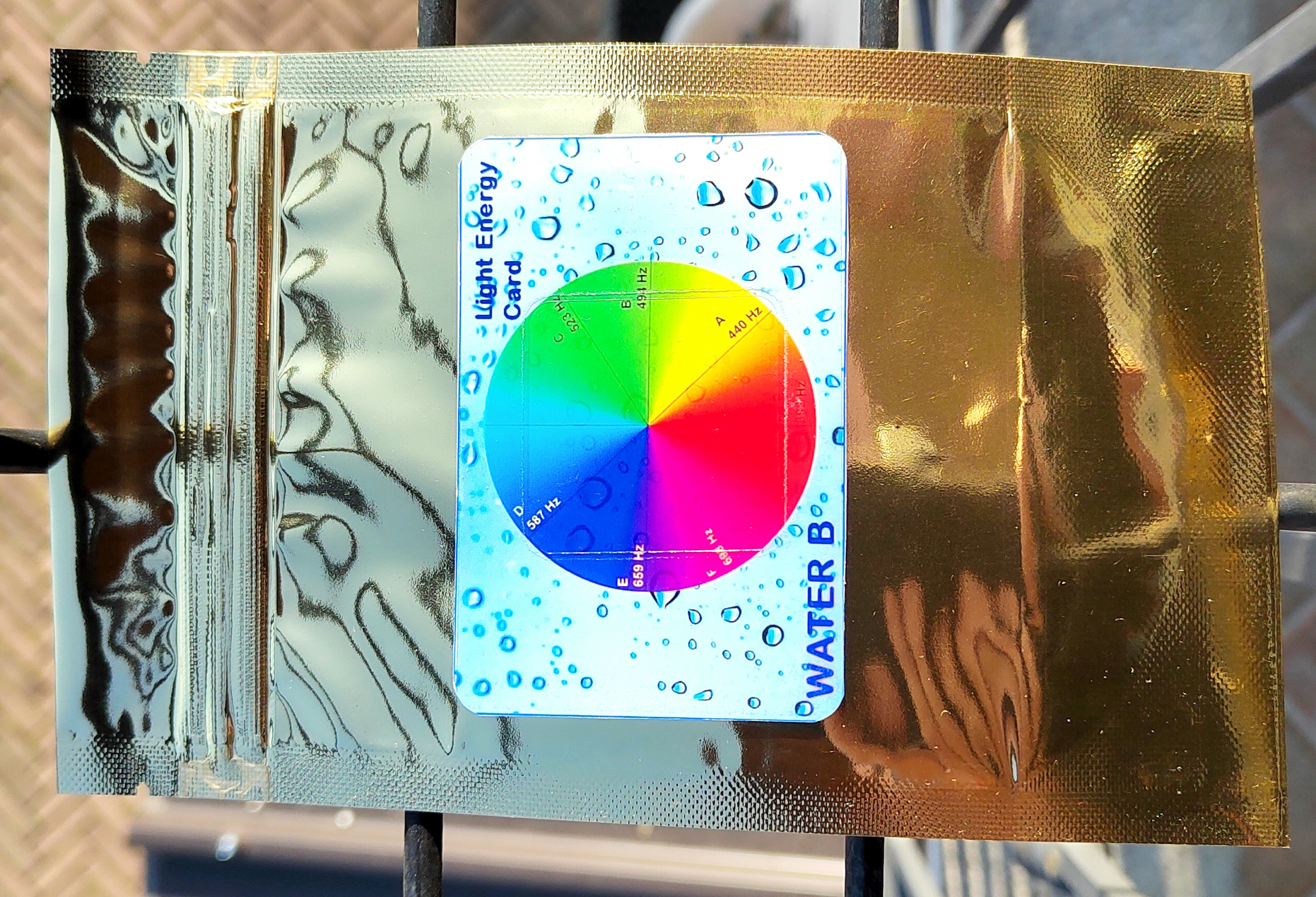
2. Water Activation.
It is possible to activate water in a cylindrical glass bottle, which is placed on the card for a minimum time of at least 36 minutes. The variations in taste are more evident if the water is at room temperature, and if the bottle is made of glass. If a plastic PET bottle is used, the results have less intensity. From the tests carried out since 2018, there are no problems when leaving the container of water on the card for many hours, as there are no further variations in its organoleptic characteristics.
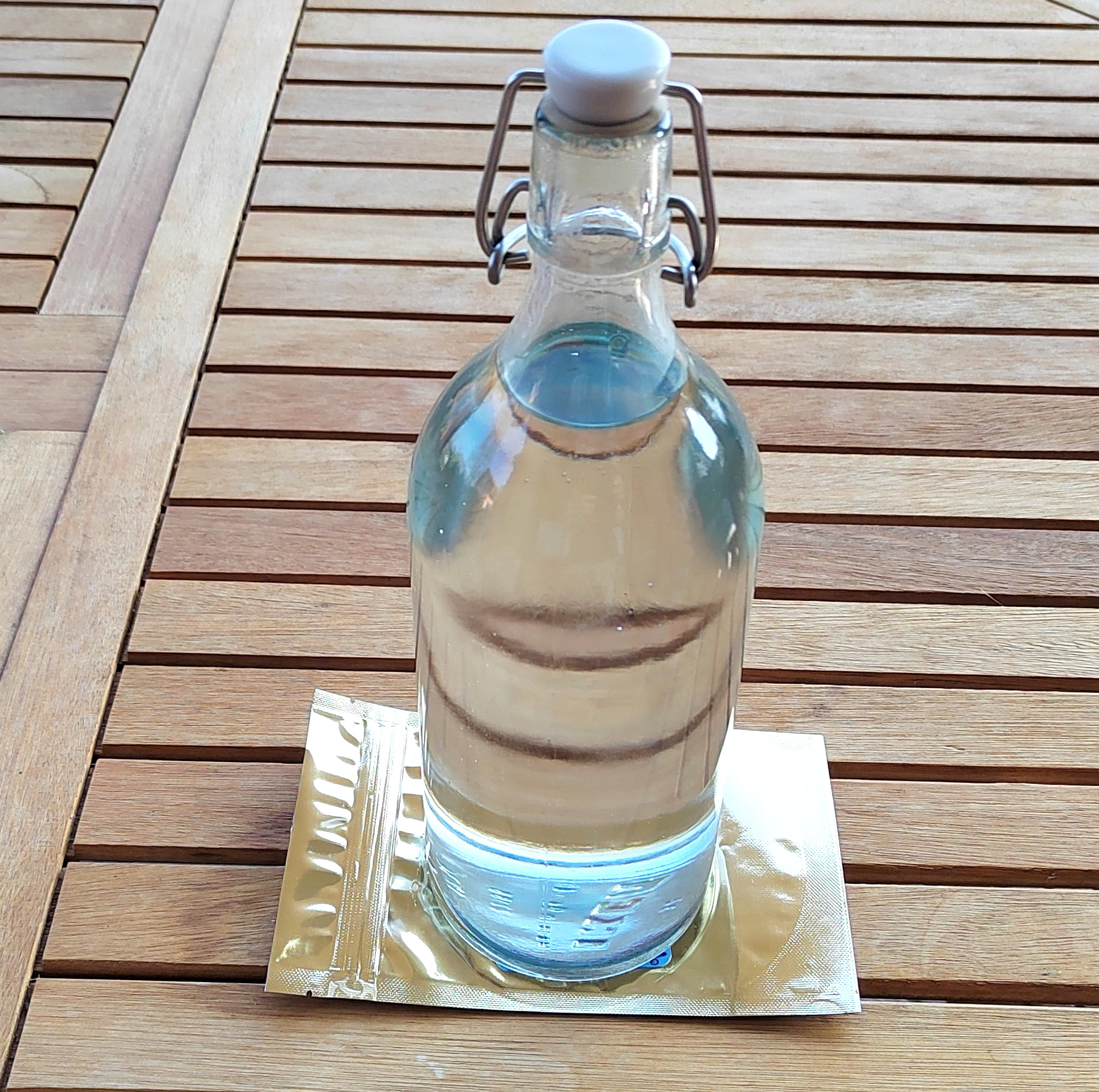
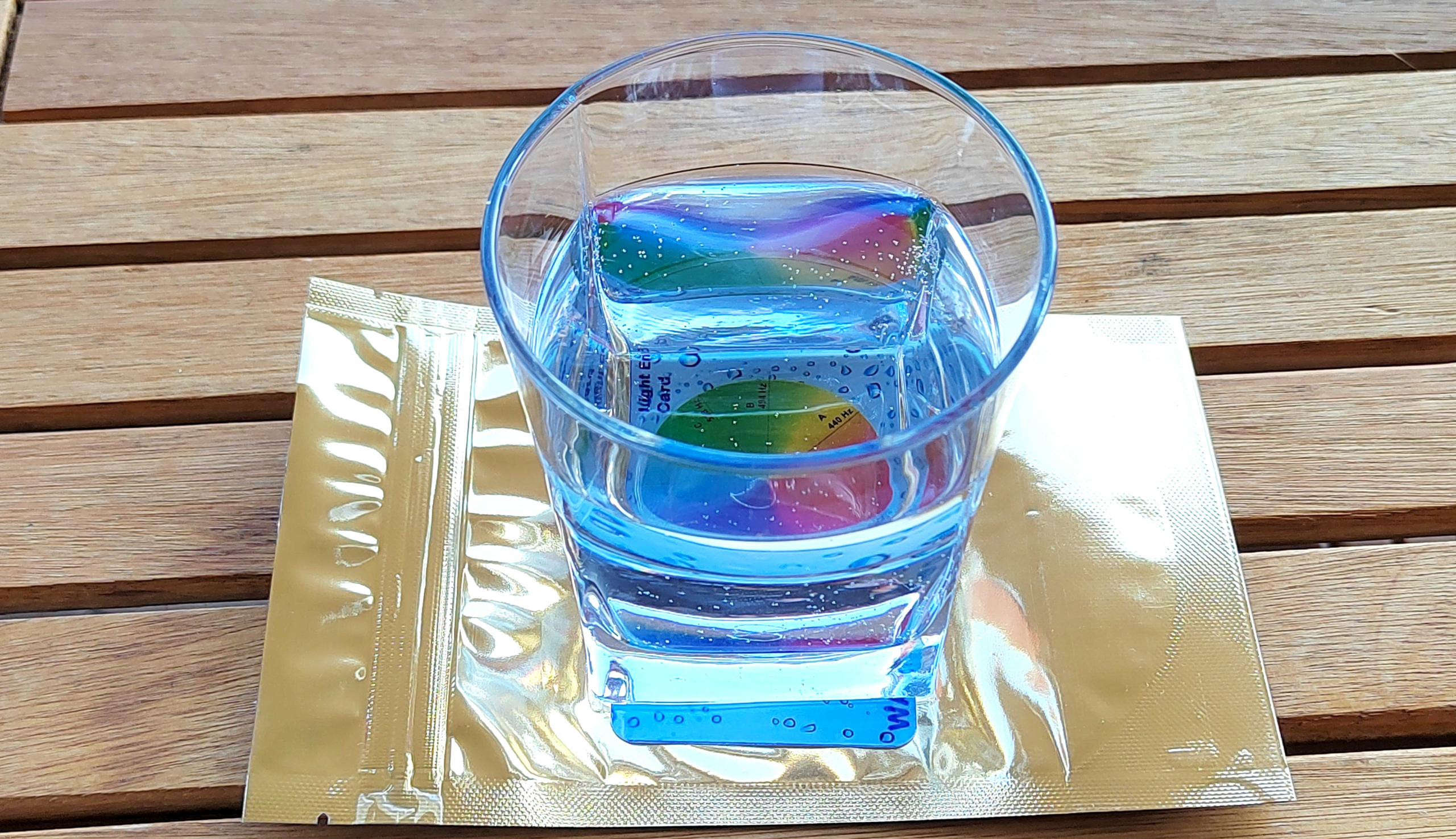
It is also possible to activate water poured into a glass cup, again with a cylindrical or truncated cone shape, as long as the cup does not have a stem that keeps the water away from the card. Within 30 minutes, it is possible to see the formation of small bubbles on the inner walls of the glass, or on the bottom of the bottle. This phenomenon does not always occur, but several tests have shown that it does not affect the final result of water activation and improvements in its taste.
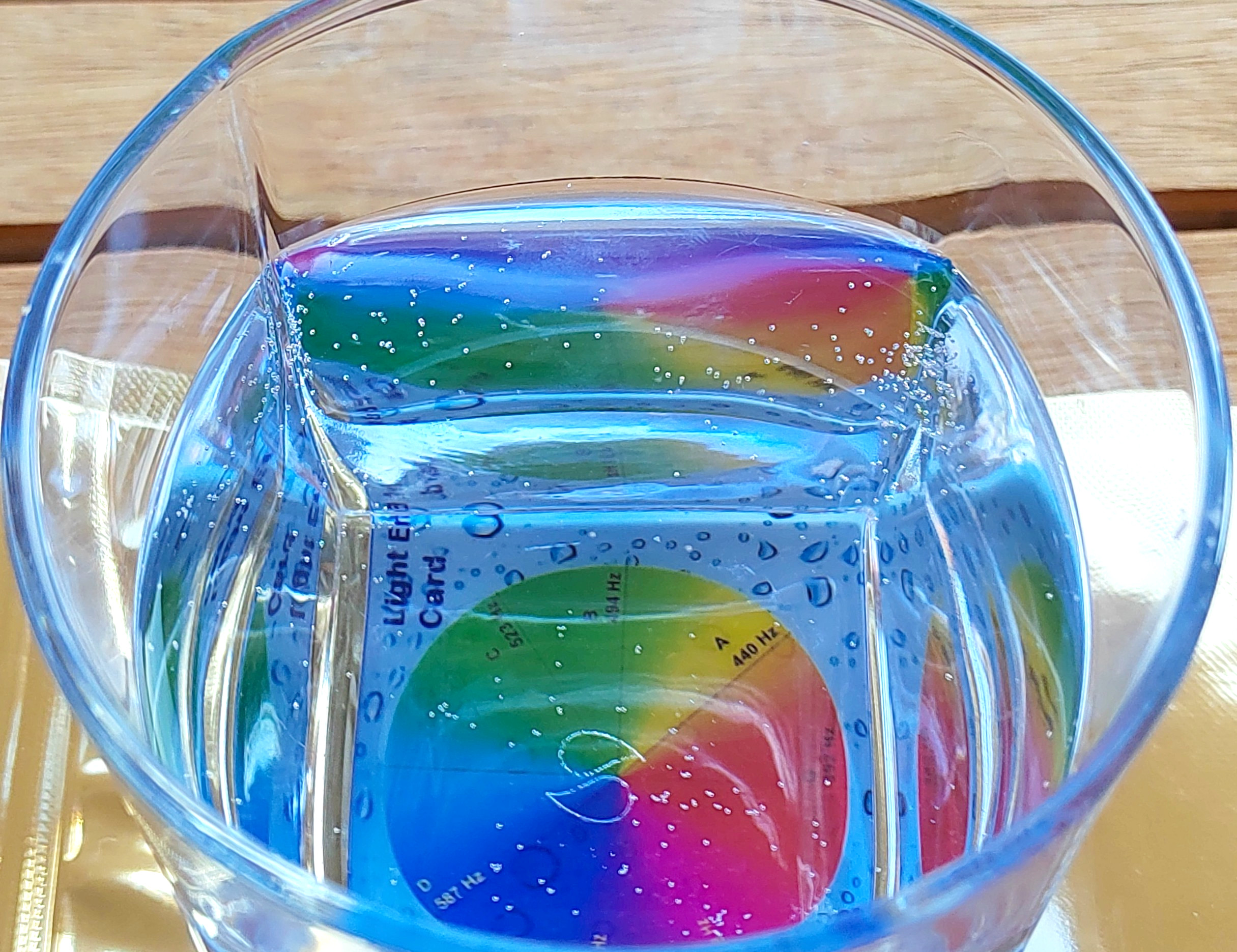
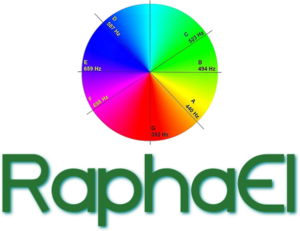
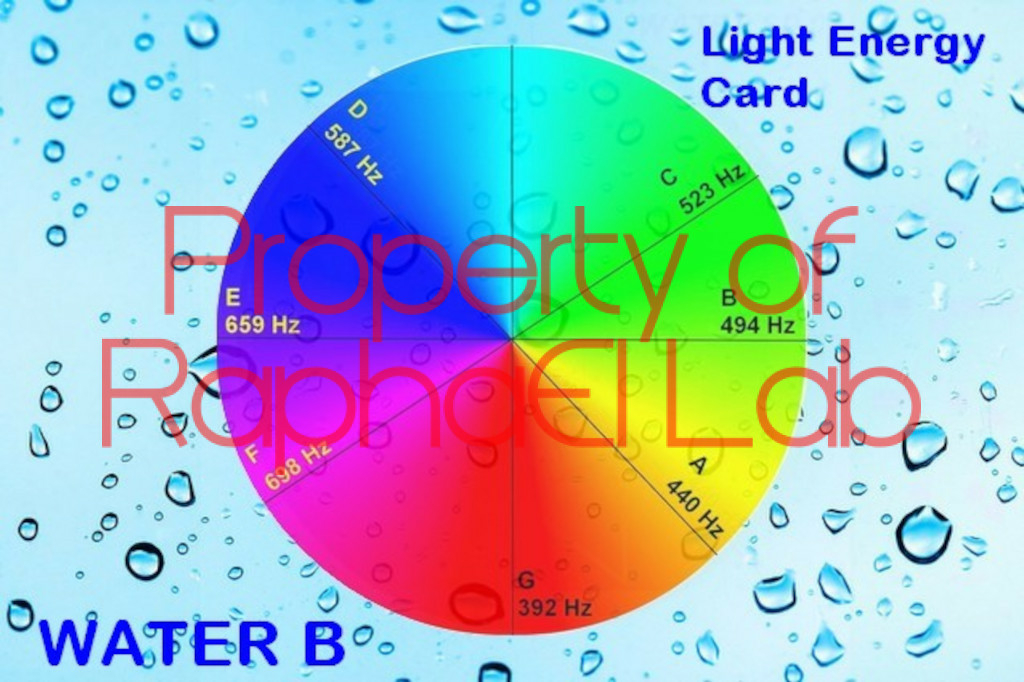

Reviews
There are no reviews yet.